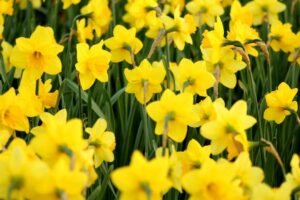As concerns about climate change and environmental sustainability continue to rise, individuals and communities seek ways to reduce their ecological footprint. In recent years, artificial grass has emerged as a viable and eco-friendly alternative to natural lawns, offering a range of environmental benefits that go beyond aesthetics.
Let’s explore some of the key environmental benefits of artificial grass and how it contributes to a greener and more sustainable planet.
1. Water Conservation
One of the most significant environmental advantages of artificial grass is its ability to conserve water. Natural lawns require extensive watering to stay healthy and green, particularly in arid or drought-prone regions. This constant demand for water places immense pressure on local water supplies and contributes to water scarcity issues.
In contrast, artificial grass eliminates the need for watering altogether, reducing water consumption and preserving this precious resource for more critical purposes.
2. Reduction in Pesticides and Fertilizers
Maintaining a lush natural lawn often involves the use of pesticides and fertilizers to combat pests and promote growth. These chemical products can leach into the soil and find their way into water bodies, causing pollution and harming aquatic life. By opting for artificial grass, homeowners can eliminate the need for harmful chemicals, creating a safer and healthier environment for both humans and wildlife.
3. Reduced Emissions
Regular lawn mowing is a common practice to keep natural lawns neat and tidy. However, gas-powered lawnmowers emit pollutants and greenhouse gases, contributing to air pollution and climate change. With artificial grass, mowing becomes a thing of the past, reducing carbon emissions and creating cleaner air for everyone.
4. Long Lifespan
High-quality artificial grass can have a lifespan of up to 15 years or more with proper maintenance. Its durability and longevity mean that it does not need frequent replacements, further reducing waste and the consumption of new resources.

5. Lower Carbon Footprint
The production of artificial grass requires energy and resources. However, when considering its long-term benefits, such as reduced water usage, elimination of mowing emissions, and lower reliance on chemical inputs, artificial grass generally has a lower overall carbon footprint compared to natural lawns.
Get Top-Quality Artificial Grass Products at Turrific Turf
At Turrific Turf, we provide high-quality synthetic grass and artificial turf installation services. We’re a reliable landscaping company in Windsor, that provides artificial grass with landscaping and curbing solutions.
Currently, we’re providing artificial grass installation in Windsor, Tilbury, Essex, LaSalle, Kingsville, Lakeshore, Chatham, and homes in nearby areas.
Contact us today for more information about our services.





